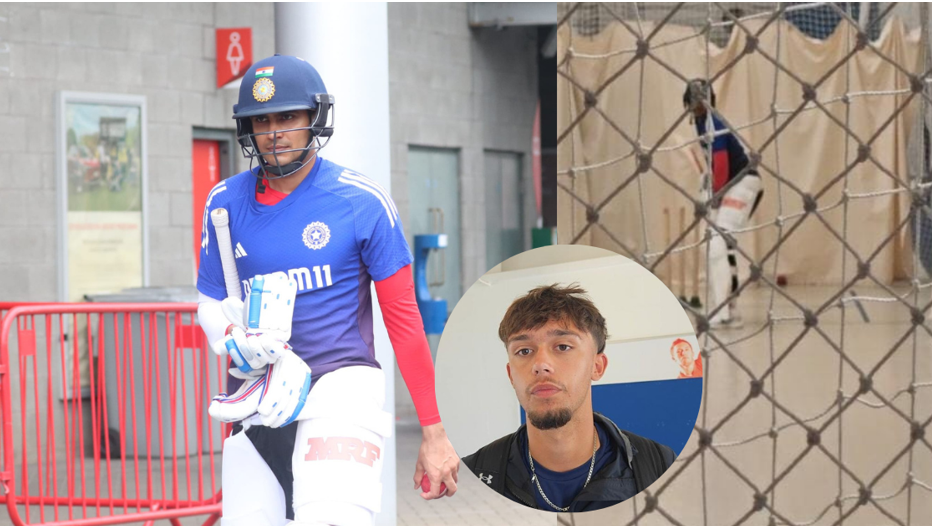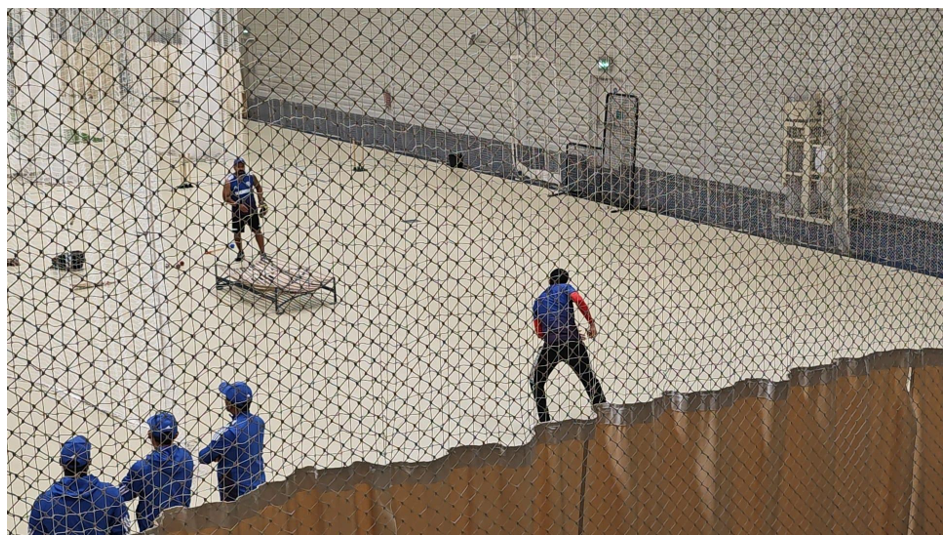
Rohan Chowdhury in Manchester
After a gap of eight days, the high-stakes England versus India Test series resumes at the Old Trafford Stadium in Manchester. England lead the series 2-1, while India, under the leadership of young captain Shubman Gill, look to bounce back after a narrow defeat at Lord’s.
Gill has been in remarkable form in this series, scoring 607 runs across three matches, including a monumental 269 at Edgbaston. However, the Lord’s Test proved to be a rare dip in performance for the Indian skipper, where he managed just 16 and six in the two innings.
As we’ve consistently reported throughout the series, Gill has been diligent with his preparation, often putting in long, focused net sessions—especially on matchday minus ones. But at Old Trafford, the setup was a bit different due to persistent rain and unfavorable weather, which forced both the teams to move their preparations indoors.
Gill looked in fine touch during the indoor net session. He arrived at the nets at 2:10 pm local time, beginning with five minutes of low underarm throws to practice basic front-foot drives. It was a slow and steady start to the session, focusing on precision and rhythm.
Next came a seven-minute drill with Nuwan, who provided bare-handed throwdowns targeting Gill’s off-stump. A focused test on his judgment: Knowing what to leave and what to play. Gill negotiated the session calmly, showing sharp awareness and solid technique.
The most rigorous phase of the session came next. Raghu joined with the sidearm thrower, alternating with two right-arm seamers — one of them being the Lancashire Under-18 pacer Adam Anjum, who spoke to us after the session. This part of the session lasted about twenty minutes. Gill looked in rhythm, barely playing and missing, with only one genuine edge observed on a ball around the fourth-stump line. Apart from that, he defended with confidence, drove crisply, and handled the short balls with authority.
Following a brief chat with batting coach Shitanshu Kotak, Gill moved to a different net where the mat was removed — leaving only the smooth indoor flooring. This was a deliberate shift to simulate the skiddiness of the ball on a damp pitch. That final phase lasted around 12-15 minutes. In total, Gill trained for just under an hour — the shortest match-eve session for him so far in the series, but perhaps one of the most intense.
After the session, we caught up with Anjum to get a bowler’s perspective on bowling to Gill and the Indian team.
“I play for Lancashire Under-18s,” Anjum introduced himself. “Today was unbelievable, you know. Bowling to one of the greatest Indian batters—it was a great experience.”
Interestingly, Anjum mentioned there weren’t any specific instructions from the Indian team when it came to bowling. “No, it was just run up and have a bowl. They didn’t really have any instructions. I think they just wanted to face the bowlers.”
Asked whether Gill showed any signs of struggle against certain deliveries, Anjum replied, “I feel like it was very hard to trouble him. He had so much time at the crease. But if anything, that fourth stump line coming back in — maybe an inside edge, a chop-on or LBW — that was the closest we got.”
Still, Gill adapted quickly. “He made a slight adjustment,” Anjum observed. “Say, if it was coming straight here, he’d adjust to the line and length. He picked it up really quick. It was only maybe one ball he’d get, and then after that, he’d just be on it straight away.”
In terms of what was Gill’s key strength, Anjum was clear: “Anything short, he’d probably put it away. Short and wide, or even anything too full, he’d be putting it away. So, honestly, apart from a good length, he was playing everything really well.”
This wasn’t Anjum’s first time bowling to the Indian team. “I bowled yesterday as well — to Jaiswal, Bumrah, and Kuldeep Yadav,” he said. “Jaiswal was similar. If you bowled a bad ball, he’d put it away. But anything on a good length, he respected it. If you strayed on leg, he worked it easily. Anything short, he just put it away.”
The unique conditions at Old Trafford also played a role in how the players trained. Of the four nets available, three had artificial mats and one was without. “Shubman, actually, batted on the mats first and then moved to the net without the mat,” Anjum recalled. “Without the mats, it’s quicker and skids through. With the mats, it sticks into the pitch a bit more. Spinners get more turn and grip there. So the mats are almost more realistic.”
He added, “Without the mats, it just skids a bit more and bounces through. Probably the weather conditions here were the reason he chose to use that surface.”
After completing his batting session, Gill went through focused slip-catching drills. The first involved an inverted arch table designed to produce unpredictable deflections, simulating sharp, erratic edges. This was followed by a more conventional first-slip catching practice, which lasted around ten minutes before he wrapped up the session and left the indoor hall.

In the fourth Test, India will be counting on their captain to lead from the front — and if the intensity of his training is any indication, Shubman Gill looks more than ready.
Follow Revsportz for latest sports news